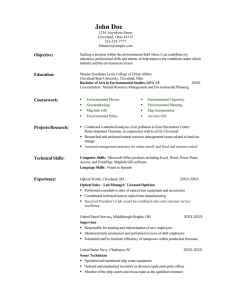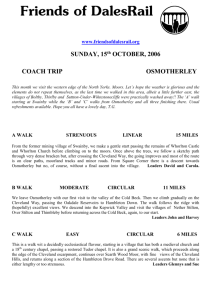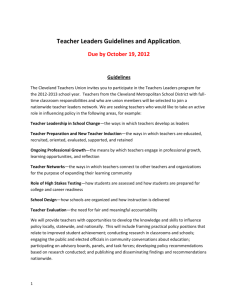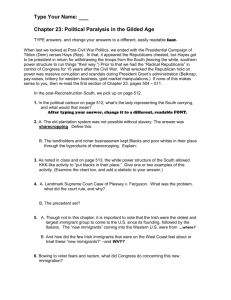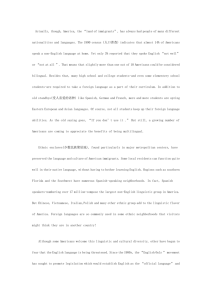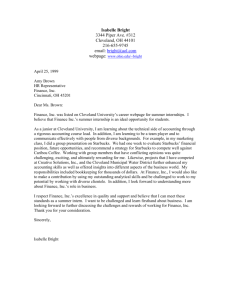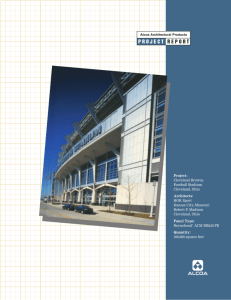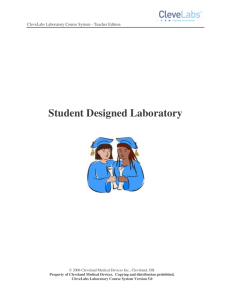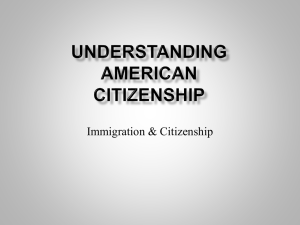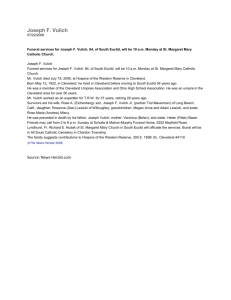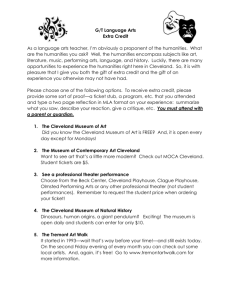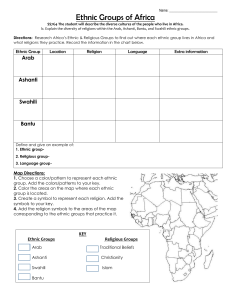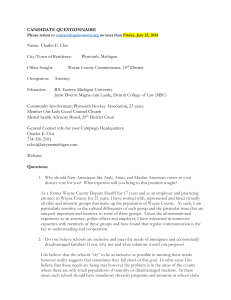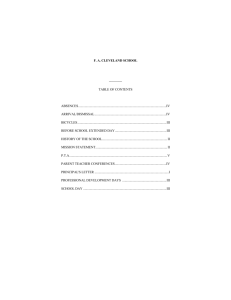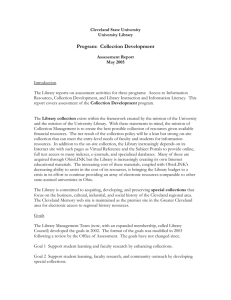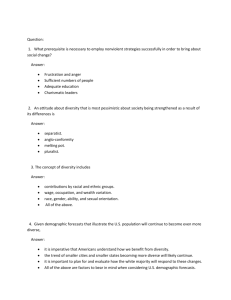File
advertisement
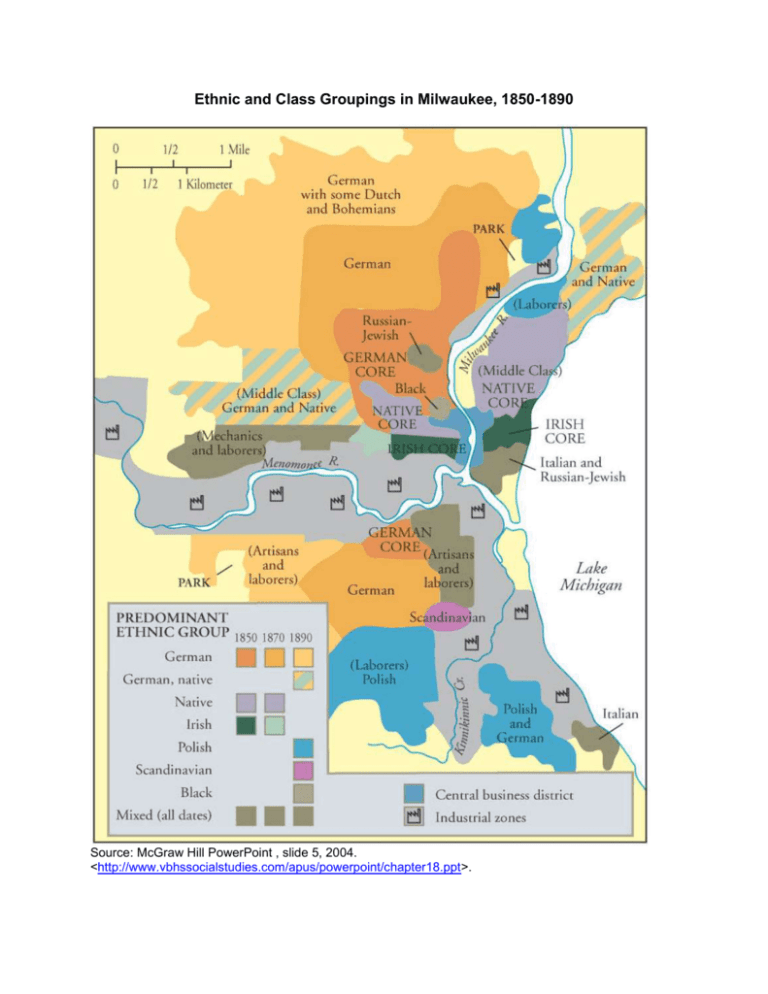
Ethnic and Class Groupings in Milwaukee, 1850-1890 Source: McGraw Hill PowerPoint , slide 5, 2004. <http://www.vbhssocialstudies.com/apus/powerpoint/chapter18.ppt>. Industrial Revolution Inventors Person Invention Date James Watt First reliable Steam Engine 1775 Eli Whitney Cotton Gin, Interchangeable parts for muskets 1793, 1798 Robert Fulton Regular Steamboat service on the Hudson River 1807 Samuel F. B. Morse Telegraph 1836 Elias Howe Sewing Machine 1844 Isaac Singer Improves and markets Howe's Sewing Machine 1851 Cyrus Field Transatlantic Cable 1866 Alexander Graham Bell Telephone 1876 Thomas Edison Phonograph, Incandescant Light Bulb 1877, 1879 Nikola Tesla Induction Electric Motor 1888 Rudolf Diesel Diesel Engine 1892 Orville and Wilbur Wright First Airplane 1903 Henry Ford Model T Ford, Assembly Line 1908, 1913 Source: Industrial Revolution Inventors. About.com. 13 February 2009 <http://americanhistory.about.com/library/charts/blchartindrev.htm>. Excerpt from: ETHNIC AND RACE RELATIONS IN THE CITY OF CLEVELAND Between the 1850s and 1930, a constant, shifting struggle emerged as the city's AngloAmerican middle- and upper-classes struggled to enforce and maintain moral and social discipline in a city populated by growing numbers of European immigrants, many of whom were Catholics and Jews. Religion and ethnicity were thus tied together, and antiCatholicism and anti-Semitism were important aspects of nativism in Cleveland and the rest of America. For example, EDWIN W. COWLES, Cleveland's most notorious antiCatholic during the last half of the 19th century, railed against both the church and the drunken Irish from his position as editor of the CLEVELAND LEADER. Tensions within and between ethnic groups also intensified as communities developed and as older immigrants sought to influence the behavior and facilitate the assimilation of more recent arrivals. Education was the first tool that Anglo-Americans used to try to inculcate the habits of "proper" behavior and good citizenship. In 1870, for example, bilingual education was adopted in the public schools in the hopes that offering some classes in German would attract into the schools the 2,000 German students who attended private schools. This policy, the superintendent explained, did "not tend to Germanize America as it [did] to Americanize the Germans." Within a decade, the number of German children attending private schools had dropped to 200. By 1887 the evening adult education program was attracting 2,000 immigrants to its classes in English and in civics in preparation for the naturalization exam. Public school programs for both immigrant children and adults were expanded repeatedly between 1870 and 1920, but the number of parochial schools also increased, making it possible for large numbers of ethnic students to escape the Americanizing influence of the public schools. The development of settlement houses such as HIRAM HOUSE provided new avenues for Americanization and educational efforts, as well as for other urban social reform work. Source: Ethnic and Race Relations. The Encyclopedia of Cleveland History. 13 February 2009 <http://ech.cwru.edu/ech-cgi/article.pl?id=EARR>.


